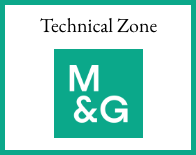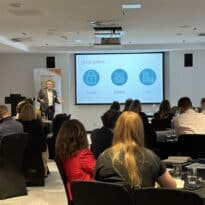For professional advisers and paraplanners only. Not to be relied upon by retail investors.
By Jessica Franks, Head of Retail Investment Products at Octopus Investments
Last year was a bumper year for capital gains tax. Capital Gains Tax (CGT) receipts for 2020/21 were a record £14.3 billion. That’s 42% more than the previous tax year.[1]
CGT will be front of mind for many advisers and clients, and you may have clients who need to plan for a capital gain this year.
This article looks at a client scenario that illustrates how investing in an Enterprise Investment Scheme (EIS) can help clients target a growth investment and support their tax planning.
A powerful way for investors to target high growth
EIS-qualifying companies are in the early stages of their growth journey and unlisted.
Buying shares in these kinds of companies can help investors diversify their portfolio by adding venture capital.
Smaller companies can be more nimble than larger, more established companies so can take advantage of uncertain economic environments.
They also allow investors to target significant growth potential, because these companies are at the beginning of their growth curve.
Of course, with this high growth potential comes higher risk. To compensate for some of the risks involved in investing in early-stage businesses, EIS-qualifying investments allow investors to claim several tax reliefs. These reliefs can support a client’s tax planning, including gains planning.
EIS investors could benefit from 30% upfront income tax relief on the amount they invest (up to a value of £1million per year). Should an individual company in an EIS portfolio find success, that growth should be tax free. Where an individual company struggles, any losses are relievable (against income or capital gains tax). This is a powerful combination of tax reliefs when investing in a portfolio of early-stage companies where returns can be driven by some companies, while others fail.
Investors could also benefit from two further reliefs, which this scenario will show in more detail: capital gains deferral and relief from inheritance tax.
Understanding the risks
Before getting into the client scenario, it’s important to understand the risks. EIS investments are high risk and there are tax risks that you need to bear in mind too.
An EIS investment could fall in value, potentially to nil, and investors may not get back the full amount invested.
Shares in unquoted companies cannot easily be sold as an exit is only possible when an EIS company is sold on behalf of all investors. So a client’s investment should be considered illiquid and a long-term investment.
The shares of unquoted companies can also fall or rise in value more sharply than shares in larger, more established companies.
Several EIS tax reliefs depend on companies maintaining their EIS-qualifying status for at least three years. It is possible that a company might cease to be EIS-qualifying and EIS reliefs previously granted would need to be paid back.
Note that HMRC could change existing tax legislation. Tax treatment also depends on personal circumstances.
An ex-business owner wants to invest for growth tax-efficiently
Jin is 75 and a founder of an automotive business. His children have no interest in taking over the business, so instead he’s sold his business and plans to enjoy retirement before leaving his wealth to his family.
He’s made a significant gain to the tune of £2 million by selling his business. £1 million of that gain benefits from Business Asset Disposal Relief resulting in a favourable rate of capital gains tax at 10% (£100,000 due) and the remaining half, less his Annual Exempt Amount (£12,3000) is subject to capital gains at 20% (£197,540 due). With no other planning, Jin has a CGT liability today of £297,540.
Jin’s business would have qualified for Business Relief, an established relief from inheritance tax. However, the cash proceeds from selling his business will not benefit from any relief, meaning that Jin has moved from expecting no inheritance tax to be due on his estate, to expecting a significant IHT bill when he dies. He would like to put plans in place that will allow him to transfer more wealth to his family on his death.
Jin’s adviser ascertains that he’s comfortable to take on risk to meet his objectives with this area of his wealth. Jin welcomes the idea of investing in fellow entrepreneurs, especially if it could help him achieve his capital gains and inheritance tax planning goals.
What Jin’s adviser recommends
Jin’s adviser suggests making two investments using the proceeds from the sale of his business.
He recommends that Jin invests a portion of his wealth that he can afford to have locked up in smaller companies for a longer period in a portfolio of EIS-qualifying companies. EIS qualifying companies will enable Jin to support fellow entrepreneurs while targeting high growth with this pot of money.
So Jin invests the amount of gain that has not benefitted from BADR (£987,700) into an EIS qualifying portfolio, which would allow him to claim up to £296,310 in income tax relief. Critically, since capital gains deferral is a valuable benefit of EIS, it would also allow him to defer the gain invested, so that £197,540 CGT otherwise payable will not be due yet.
The gains deferred in EIS companies would come back into charge when each company in his portfolio is sold, at the relevant rate of CGT at that time. As this can happen over a number of years, it might allow him to make use of multiple Annual Exempt Amounts. If Jin were to die holding his EIS investments, the capital gain deferred would be eliminated.
Jin’s adviser explains that EIS investments also qualify for business relief, which means that provided Jin’s funds are invested within three years of the sale of his business, they should be able to be left to his children free from IHT.
Jin’s adviser suggests that he invests a further £1 million of the proceeds realised on the sale of his business in Business Relief-qualifying companies to complete his estate planning. Business relief qualifying companies can undertake a wide range of qualifying trades, and options exist for Jin to target higher levels of growth or more predictable returns depending on his goals. They can also be sold if Jin unexpectedly needs access to some or all of this portion of wealth, subject to liquidity being available. Due to replacement relief, like his EIS investment, Jin’s BR qualifying investment should qualify for relief immediately, rather than needing to wait for a two-year holding period to pass.
This example is designed to illustrate the potential impact of tax reliefs associated with EIS and BR-qualifying investments. It assumes no losses or gains and doesn’t take into account costs and charges. These are all important factors that need to be considered.
Octopus Ventures EIS Service
If you’d like to learn more about how EIS works and how it could help your clients, you may want to look at the Octopus Ventures EIS Service.
Visit the Octopus Ventures EIS webpage
Learn how EIS works and the tax reliefs available
The Octopus Ventures EIS Service is not suitable for everyone. Any recommendation should be based on a holistic review of your client’s financial situation, objectives and needs. We do not offer investment or tax advice. Issued by Octopus Investments Limited, which is authorised and regulated by the Financial Conduct Authority. Registered office: 33 Holborn, London, EC1N 2HT. Registered in England and Wales No. 03942880. Issued: October 2022. CAM012285-2208
[1] Professional Adviser, CGT receipts for 2020/21 reach record £14.3bn – HRMC data, August 2022




































